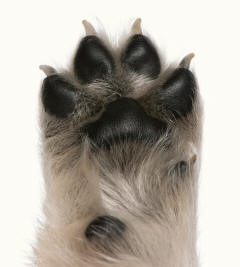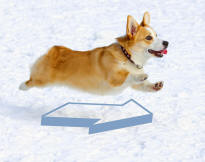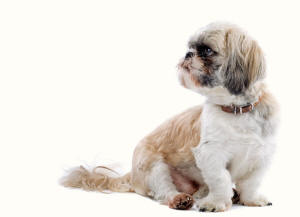Glossary

Gait
The pattern of movement of animals during (terrestrial) locomotion.
Gaits used by cats and dogs include the walk, the amble, the pace, the trot, the canter and the gallop.
Gaits used by cats and dogs include the walk, the amble, the pace, the trot, the canter and the gallop.
Slew Feet
Feet that are turned outwards.
Trot
A symmetrical, two-beat gait in which diagonally contralateral limbs move in unison.
This is an endurance gait, which allows coverage of ground at a reasonable speed but without expending maximum energy. The trot may, therefore, be maintained for hours.
This is an endurance gait, which allows coverage of ground at a reasonable speed but without expending maximum energy. The trot may, therefore, be maintained for hours.
Forefoot
The foot of a cranial (anterior) limb.
Central Line
An imaginary line along the direction of travel.


Toe
A digit of a foot .
Toes are named and identified by Roman numerals:
in a pentadactyl (five-fingered or five-toed) arrangement, the most medial digit, if present, is I (e.g. the human thumb) and the most lateral is V (e.g. the human little finger).
Toes are named and identified by Roman numerals:
in a pentadactyl (five-fingered or five-toed) arrangement, the most medial digit, if present, is I (e.g. the human thumb) and the most lateral is V (e.g. the human little finger).
Divergent Toes
A foot in which toes are spread outwards.
Tight
Parts held close with little or no space between.
For example, toes which are tight have little or no interdigital space between them.
For example, toes which are tight have little or no interdigital space between them.
Hock
The tarsal region or tarsal joint of the hind leg of a quadruped.
Also known (colloquially) as the heel or ankle.

Also known (colloquially) as the heel or ankle.







